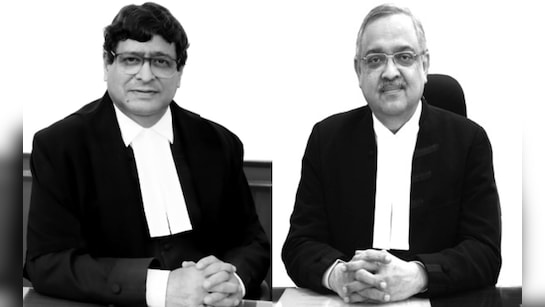New Delhi: In a landmark ruling reaffirming India’s linguistic diversity, the Supreme Court on Tuesday upheld the use of Urdu alongside Marathi on the nameboard of the Municipal Council of Patur in Maharashtra. The Court firmly stated that Urdu is an Indian language, born in the subcontinent, and cannot be tied to any religion, reported the Bar and Bench.
A Bench comprising Justices Sudhanshu Dhulia and K Vinod Chandran dismissed the petition filed by Varshatai Sanjay Bagade, a former councillor of Patur town, who challenged the presence of Urdu on the nameboard under the Maharashtra Local Authorities (Official Languages) Act, 2022. The apex court ruled that the Act imposes no bar on the use of Urdu and reaffirmed that both Marathi and Urdu enjoy constitutional status under the Eighth Schedule of the Indian Constitution.
The Court rebuked the misconception that Urdu is foreign or inherently Islamic, stating:
“The prejudice against Urdu stems from the misconception that Urdu is alien to India. This opinion is incorrect. Urdu, like Marathi and Hindi, is an Indo-Aryan language born in this land. It evolved over centuries as a language of interaction among diverse communities and reached artistic heights through poetry and literature.”
The Bench criticized colonial-era policies for promoting a divisive narrative that aligned Hindi with Hindus and Urdu with Muslims, calling this association a “pitiable digression” from India’s unity in diversity. The justices highlighted how this division stifled the natural fusion of Hindi and Urdu, once part of a shared linguistic heritage.
“Let our concepts be clear. Language is not religion. Language does not even represent religion. Language belongs to a community, to a region, to people — not to any one faith. It is culture. It is a measure of civilizational progress,” the Court observed.
Referring to Urdu as the finest representation of Ganga-Jamuni Tehzeeb — the syncretic cultural ethos of North and Central India — the Court said the signage issue was not a matter of politics or religious identity but of accessibility and public communication.
The Patur Municipal Council had pointed out that Urdu had been used since 1956 and was widely understood by local residents. The Supreme Court also noted that the legal challenge should have been filed by the Chief Officer of the Council as per the Maharashtra Municipal Councils Act, not by an individual councillor.
The Bombay High Court had earlier dismissed Bagade’s plea in 2021, upholding the Municipal Council’s position. Unfazed, she approached the Supreme Court, which now brought finality to the matter.
The judgment also emphasized the deep imprint of Urdu on India’s legal system.
“Urdu words have a heavy influence on court parlance — terms like adalat, halafnama, and peshi are rooted in Urdu and are intrinsic to both civil and criminal proceedings in Indian courts,” the Bench observed.
Concluding the ruling with an appeal for introspection and cultural openness, the Court said:
“Our misconceptions, perhaps even our prejudices against a language, must be courageously and truthfully tested against the reality of our nation’s great diversity. Let us make friends with Urdu and every language. Our strength lies in our plurality, not uniformity.”
Advocates Kunal Cheema, Satyajeetsingh Raghuwanshi, and Raghav Deshpande represented the petitioner. The respondents were represented by advocates Preet S Phanse, Siddharth Dharmadhikari, and Aaditya Aniruddha Pande.
This judgment not only upholds linguistic rights but also sends a strong message against communalizing language, reinforcing the constitutional vision of unity in diversity.




